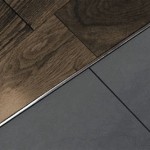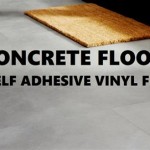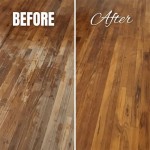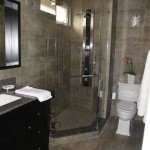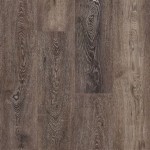How Much Does It Cost To Replace Bathroom Floor Tile?
Replacing bathroom floor tile is a common home improvement project, undertaken for aesthetic updates, addressing damage, or resolving underlying issues like leaks. The cost associated with this project can vary significantly based on numerous factors, including the type of tile selected, the size of the bathroom, the complexity of the installation, and local labor rates. This article provides a comprehensive overview of the various cost components involved in replacing bathroom floor tile, offering insights to help homeowners budget effectively for this undertaking.
The first, and often the most significant, element of the overall cost is the material cost of the tile itself. Tile prices vary substantially depending on the material, design, and manufacturer. Ceramic and porcelain tiles are generally the most budget-friendly options, while natural stone tiles like marble, granite, and slate command higher prices. Glass tiles and specialty tiles can also contribute to a higher material cost. Beyond the cost per square foot of the tile, homeowners also need to factor in additional materials such as grout, thinset mortar, sealant, and any necessary underlayment.
Labor costs constitute another substantial portion of the total expense. These costs are primarily determined by the hourly or per-square-foot rate charged by the tile installer, the scope of the preparation work required, and the complexity of the tile pattern. Intricate patterns or designs necessitate more time and skill, potentially increasing labor costs. Furthermore, if the existing flooring requires extensive removal and preparation, the labor costs will likely be higher than a straightforward installation on a prepared subfloor.
Before embarking on a bathroom floor tile replacement, it is essential to have a clear understanding of the potential expenses involved. This requires careful consideration of the various factors at play, including tile selection, bathroom size, scope of the project, and prevailing labor rates. By understanding these factors, homeowners can develop a realistic budget and make informed decisions about their bathroom renovation project.
Key Point 1: Tile Material Costs and Considerations
The choice of tile material directly influences the overall cost of the project. Ceramic and porcelain tiles represent the most common and economical options. Ceramic tiles are known for their affordability and versatility, while porcelain tiles offer greater durability and water resistance. Both are available in a wide range of colors, patterns, and sizes, allowing for diverse design possibilities. The typical cost range for ceramic tiles is generally between $1 and $5 per square foot, while porcelain tiles typically range from $3 to $10 per square foot.
Natural stone tiles, such as marble, granite, and slate, offer a luxurious and sophisticated aesthetic. However, they also come with a significantly higher price tag. Marble tiles can range from $7 to $20 per square foot, granite tiles from $6 to $15 per square foot, and slate tiles from $5 to $15 per square foot. The higher cost of natural stone reflects their rarity, extraction and processing complexities, and inherent beauty. Natural stone also requires specialized sealants and maintenance to protect them from staining and water damage, adding to the long-term cost.
Glass tiles offer a unique and visually appealing option, particularly for accents and decorative borders. The cost of glass tiles can vary widely depending on the size, shape, and color, ranging from $8 to $30 per square foot. Specialty tiles, such as mosaic tiles, hand-painted tiles, or patterned tiles, can also contribute to higher material costs. These tiles often require specialized installation techniques and may be sourced from artisanal producers, increasing their value.
Beyond the cost of the tiles themselves, additional material costs include thinset mortar, grout, sealant, and backer board (if required). Thinset mortar is used to adhere the tiles to the subfloor, grout fills the spaces between the tiles, and sealant protects the grout from moisture and staining. Backer board, typically made of cement or fiber cement, provides a stable and water-resistant substrate for tile installation, particularly in wet areas like bathrooms. The combined cost of these supplementary materials can add an additional $1 to $3 per square foot to the total material cost.
It is essential to accurately measure the bathroom floor area to determine the quantity of tile required. Always factor in an extra 10-15% for waste due to cuts, breakage, or future repairs. Purchasing slightly more tile than needed ensures a consistent supply of matching tiles should any replacements be necessary down the line.
Key Point 2: Labor Costs and Installation Factors
Labor costs constitute a significant portion of the overall expense, often equaling or exceeding the cost of the tile itself. The rates charged by tile installers vary depending on their experience, skill level, and geographic location. In areas with a higher cost of living, labor rates tend to be higher. The complexity of the installation also plays a role in determining labor costs. Simple, straight-lay tile patterns are typically less expensive to install than intricate patterns or designs that require more precise cuts and layout skills.
The preparation of the subfloor is a crucial step in the tile installation process, and the extent of preparation required can significantly impact labor costs. If the existing flooring is damaged, uneven, or unstable, it may need to be removed and replaced or repaired before the new tile can be installed. Removal of old flooring can be time-consuming and labor-intensive, especially if it involves removing multiple layers or dealing with asbestos-containing materials. Repairing an uneven subfloor may involve applying self-leveling compound or installing a new underlayment, adding to both the labor and material costs.
Installation costs are typically quoted either per square foot or as an hourly rate. Per-square-foot rates generally range from $4 to $10 for basic tile installations, while more complex installations can command rates of $10 to $20 or more per square foot. Hourly rates for tile installers typically range from $50 to $100 per hour. When obtaining quotes from different installers, it is crucial to clarify whether the quote includes all aspects of the job, including demolition, subfloor preparation, tile installation, grouting, and sealing.
Other factors that can influence labor costs include the size and shape of the bathroom. Smaller bathrooms may require more intricate cuts and fitting, potentially increasing the installation time. Bathrooms with unusual shapes or features, such as curved walls or built-in fixtures, may also present installation challenges that can impact labor costs. Accessibility to the bathroom can also be a factor. If the bathroom is located on an upper floor or requires installers to navigate narrow hallways or stairs, labor costs may be higher due to the increased effort and time required.
Homeowners who are considering a DIY (Do-It-Yourself) tile installation should carefully assess their skills and experience before embarking on the project. While DIY tile installation can save on labor costs, it also requires a significant investment of time and effort. Improper installation can lead to problems such as cracked tiles, uneven grout lines, and water damage, which can ultimately be more costly to repair than hiring a professional installer in the first place. It is advisable to consult with a professional tile installer before attempting a DIY project to assess the feasibility and ensure proper preparation.
Key Point 3: Additional Costs and Hidden Expenses
Beyond the core costs of tile and labor, several additional expenses can impact the total cost of a bathroom floor tile replacement. These costs may not be immediately apparent but can significantly affect the overall budget if not anticipated. One common additional cost is the disposal of old flooring and construction debris. Most contractors will include debris removal in their quotes, but it is essential to confirm this upfront. If the homeowner is responsible for disposal, they will need to factor in the cost of renting a dumpster or paying for waste removal services.
Another potential additional cost is the replacement of fixtures and fittings. During the tile installation process, it may be necessary to remove the toilet, vanity, or other bathroom fixtures. If these fixtures are old or damaged, it may be a good opportunity to replace them with new ones. This can add to the overall cost but can also enhance the overall look and functionality of the bathroom. Similarly, if the existing baseboards are damaged or outdated, they may need to be replaced after the tile installation is complete.
Unexpected issues discovered during the demolition process can also lead to additional costs. For example, if the subfloor is found to be severely damaged or rotted due to water leaks, it may need to be replaced entirely. Similarly, if asbestos-containing materials are discovered, they will need to be professionally removed and disposed of, adding to the cost. It is always prudent to set aside a contingency fund to cover unforeseen expenses that may arise during the project.
Permitting requirements can also add to the cost of the project, depending on local regulations. In some jurisdictions, a building permit may be required for tile replacement, particularly if it involves significant structural changes or plumbing modifications. The cost of a building permit can vary depending on the location and the scope of the work. It is essential to check with the local building department to determine whether a permit is required and to obtain any necessary permits before starting the project.
Finally, consider the cost of cleaning and finishing. After the tile installation is complete, the bathroom will need to be thoroughly cleaned to remove any dust, debris, or grout haze. This can be done by the homeowner or by hiring a professional cleaning service. Additionally, sealing the grout lines is essential to protect them from moisture and staining. The cost of grout sealant is relatively low, but the time and effort required to apply it should be factored into the overall project budget.
By carefully considering all of these factors, homeowners can develop a realistic budget for their bathroom floor tile replacement project and avoid unexpected financial surprises. Obtaining multiple quotes from reputable contractors, thoroughly researching tile options, and planning for potential contingencies are all essential steps in ensuring a successful and cost-effective renovation.

Fixr Com Tile Flooring Installation Cost Floor S

Average Bathroom Tile Installation And Retiling Cost Forbes Home

Cost To Tile Bathroom Floor 2024 Home Flooring Pros

How Much Does Tile Installation Cost 2024 Guide Modernize

How Much Does Tile Installation Cost 2024 Guide

How Much Does It Cost To Install A Tile Shower Homeserve Usa

How Much Does It Cost To Tile A Kitchen Or Bathroom

How Much Does It Cost To Retile A Bathroom In 2024

A Complete Guide To Ceramic Tile Installation Costs In 2024 Forbes Home

Ceramic And Porcelain Tile Cost Installation
See Also
